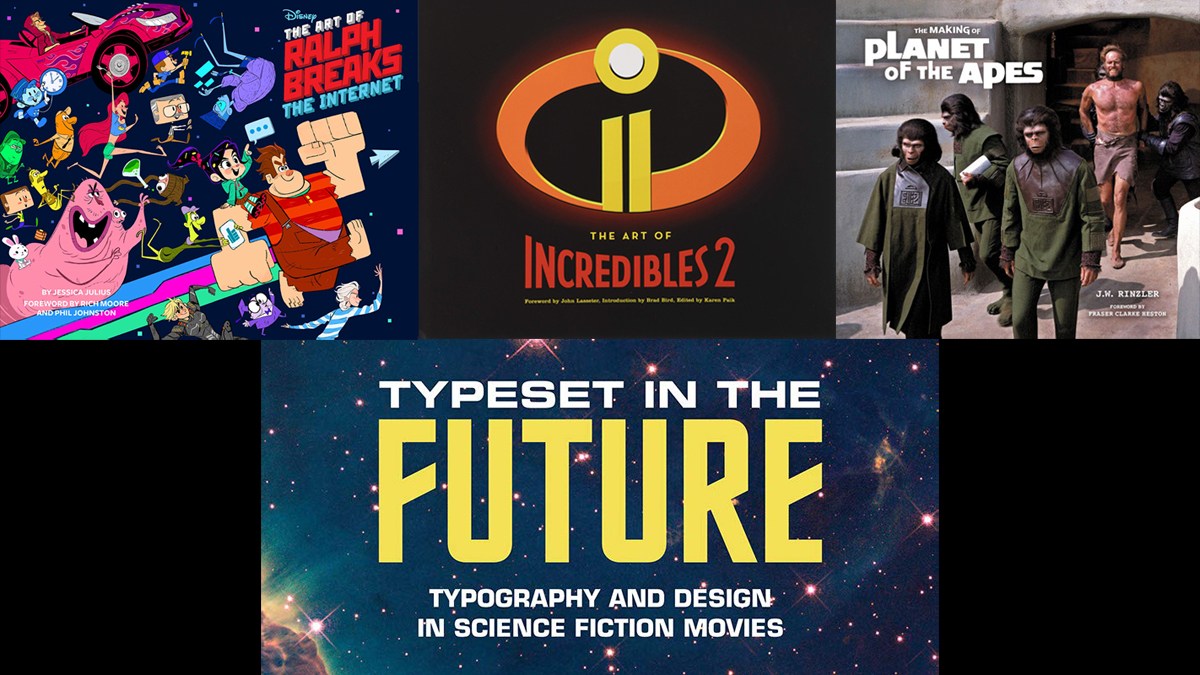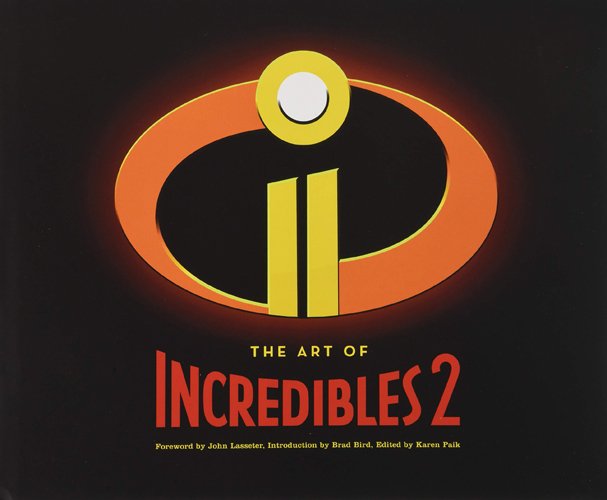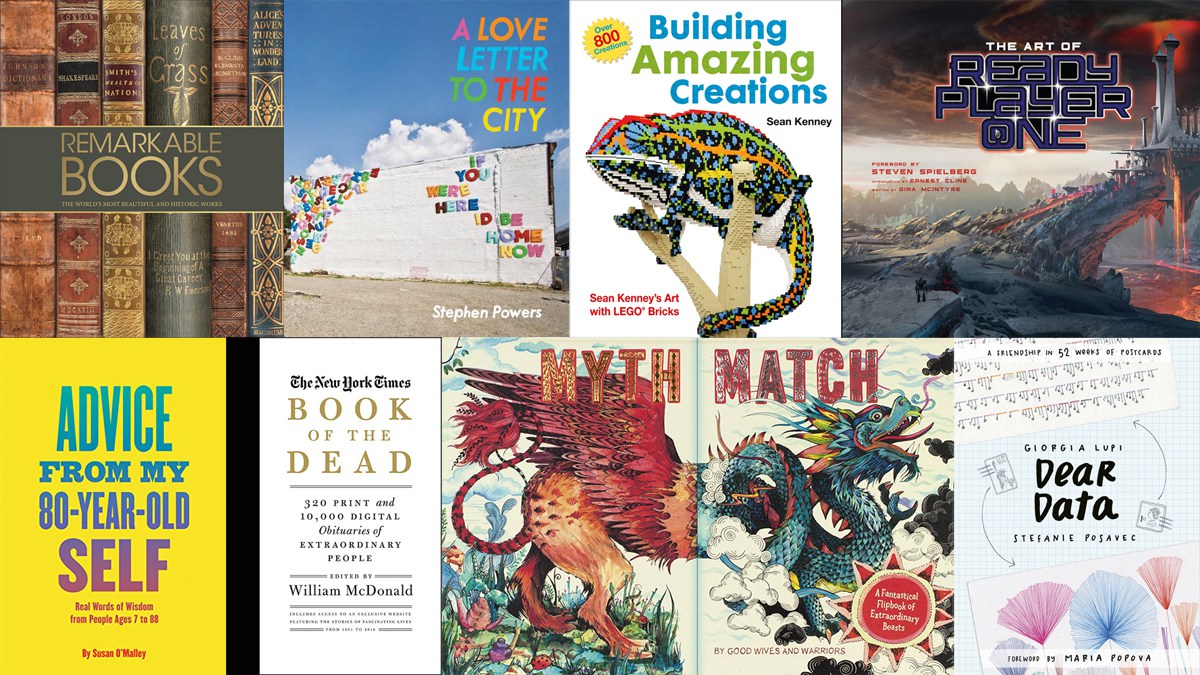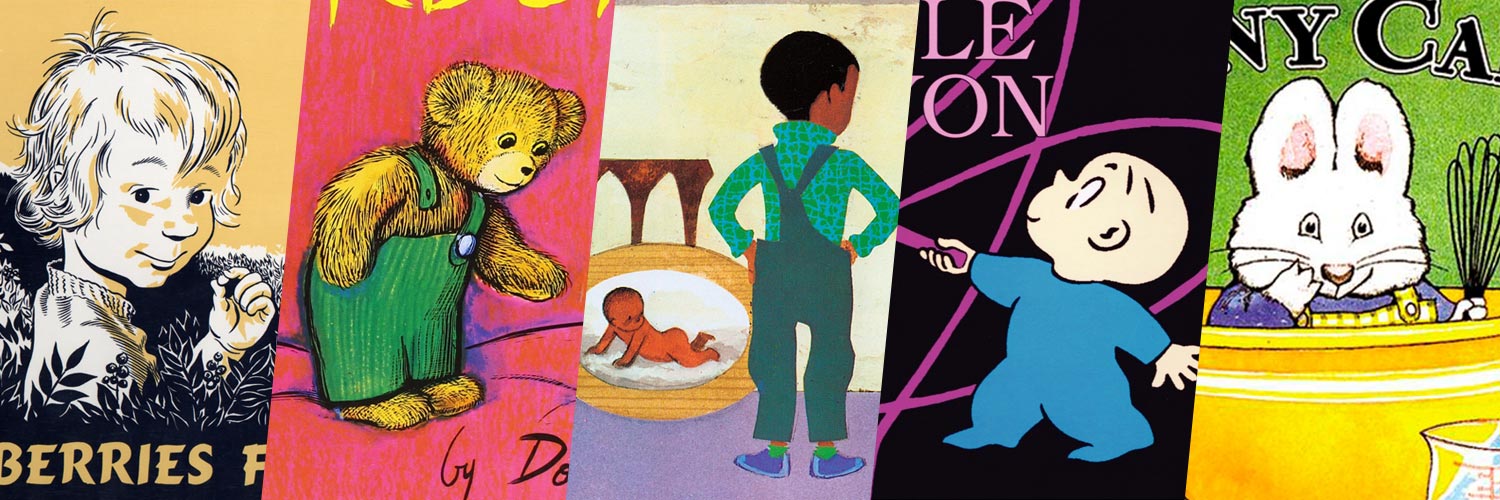Today, I’ve got a short stack of big books about movies: the making of two fantastic animated films from this year, an exploration of typography in futuristic sci-fi movies, and a huge tome about the making of Planet of the Apes (which celebrated its 50th birthday this year).
The Art of Incredibles 2 edited by Karen Paik
I’ve been remiss in sharing this one, but if you’re a fan of the movie, you’ll love flipping through this art book. The book is primarily artwork, as you might expect, with a foreword by John Lasseter and an introduction by Brad Bird. There are notes on the various designs from people involved in the movie, from character designers to story artists to production designers. The book is divided up into four sections: characters, environments, vehicles, and outtakes. No art book can be entirely spoiler-free, of course, but this does a good job of omitting some of the big surprises, though that necessarily means leaving out images that pertain to those sections of the movie, too.
I always love getting a peek at the behind-the-scenes stuff, particularly because there are things that flash by too quickly to see on screen. For instance, I missed the fact that Screenslaver’s lair is set up in a square spiral pattern when I saw the film, but the sketch of the room layout makes it obvious. This book lets you linger on the various signage and product logos (including some that weren’t actually used in the movie), as well as showing a lot of concept artwork for things like the wannabe supers or the Hydroliner. And the outtakes includes a few bits and pieces that were cut entirely, like Edna Mode’s rival designer Galbaki. There was even a character design of Honey, Lucius’ wife who is only heard off-screen in both films. Definitely one I’d recommend to Incredibles fans.
The Art of Ralph Breaks the Internet by Jessica Julius
If you’ve seen Ralph Breaks the Internet, then you know that there are plenty of scenes where you wish you could pause it just to take in the sheer volume of logos and characters that fill the screen, particularly once Ralph and Vanellope make it to the internet. This book digs into the creation of the movie, from the way that characters were updated and tweaked from the original movie to the design of buildings and vehicles in the internet, to some of the major new locations and characters in the sequel. And, of course, there’s a section on OhMyDisney.com, where Vanellope runs into the Disney princesses (and other characters from the Disney-Marvel-Star Wars conglomerate). It was fun to see the thought put into the look of the princesses, who were intended to be the “internet versions” of themselves.
My favorite part, though, is diving into the design of the internet itself. What should email look like, or eBay, or YouTube? What do the users look like, and how do they get around? The filmmakers had to make countless decisions about what the internet would be as a physical place, and it’s a lot of fun to see the various ways that things could have turned out. Oh, and the logos: there are so many of them, because the movie needed to plaster them everywhere, so the graphics teams were given free reign to come up with app names and logo designs, many of which you see floating by during the end credits of the movie. In this book, you’ll get a chance to peruse those a little more.
In a clever tip to the theme, the commentary from the filmmakers is all presented as (unbranded) social media posts: some sections look like Twitter conversations, some appear as Reddit threads, and so on. There are spoilers aplenty here, though, so if you haven’t seen the movie yet, you might want to wait until afterward before cracking open this book.
Typeset in the Future by Dave Addey
Dave Addey is a typography geek and a film geek, and he puts those two obsessions to use in Typeset in the Future, which began its life as a website before being adapted and published as a lovely hardcover book. In particular, Addey examines fonts that are used in cinematic portrayals of the future, from 2001: A Space Odyssey to Blade Runner to Wall·E. How did Eurostile become the font to indicate to audiences that a movie takes place in the future? Why does slicing through letters (a la Blade Runner) look futuristic to us? Why does official Starfleet type style in Star Trek use a different typeface for the “1” in ship designations?
Addey examines all of these questions and more, showing how spare Letraset bits are often used to add some technical lettering or glyphs, or pointing out ways that a single letter can help identify a typeface, or explaining how the French self-destruct instructions in Alien are missing some crucial parts that were included in the English instructions. You can read a lot of his explorations on the website, sure, but the book also includes interviews with various directors and designers, and the chapters have been updated and in some cases expanded. I also love the way that there are samples of every font that’s referred to in the text, so you can see all of the letterforms and not just the examples in the numerous screenshots.
But the text isn’t just informative—it’s also very funny, from his tongue-in-cheek rules for setting your text in the FUTURE to non-typographical observations about technology. I learned a lot of fun trivia about various movies, things that I never would have noticed because I don’t freeze-frame every instance of text in a movie and zoom in until I can read it. But Addey does, for your benefit!
The book includes in-depth dives into 2001, Alien, Star Trek, Blade Runner, Total Recall, Wall·E, and Moon, along with five interviews and a bonus chapter about Eurostile. It’ll make you want to rewatch every film on the list with a special eye on the typography in the movie, and you’ll start paying more attention to the way text is used in films (particularly in sci-fi films).
The Making of Planet of the Apes by Jonathan Rinzler
Here’s a book that’s been 50 years in the making. Planet of the Apes was a groundbreaking movie for its time, from its subject matter and political themes to the makeup and set design, and this hefty tome explores all of it. It’s a 300-page coffee table book that is dense with text and photos and illustrations; most of the text details the production of the movie, with plenty of information about all of the people involved (and often other films that they worked on). There are also sidebars with summaries of the book or script, blueprints of the spaceship, and so on.
I have to admit that, although I know the outlines of the movie and many of the quotable lines, I’m not sure if I’ve ever seen the entire movie all the way through—or if I have, it was a long time ago. (I did see one or two of the newer remakes when those were in theaters.) But poring over this book really made me want to see the original film again. It’s a deep dive into the the film and the world in which it was made, and a must-read for fans.
My Current Stack
I was traveling to visit family this past week, which always leads to the dilemma: do I bring this book that I’m half done with, or start another book? Do I bring both? How much reading material do I really want to pack with me so that I don’t run out in the middle of the trip, but won’t be hauling a bunch of extra weight? (I know, I know, a lot of this would be moot if I’d just live in the 21st century and read books electronically, but…)
At any rate, I finished off The Living by Isaac Marion, completing the Warm Bodies quartet, and enjoyed it. It feels like the philosophizing and magic became a bit more prominent in the last two books and may not be exactly what I was expecting from this zombie series, but overall I liked what Marion did with the genre. I think one of the big issues in zombie stories is the fear of your loved ones becoming monsters. While that’s still present in Warm Bodies, the reverse is also there: what happens when a monster becomes a loved one?
The other book I took with me is Here and Now and Then by Mike Chen, a time travel story that comes out late January. (Like I said, time travel.) Kin Stewart is a time-traveling secret agent—basically a time cop, no relation to Van Damme. But when he gets stranded in the past, he ends up settling down and starting a family. What happens when the agency finally shows up to take him home? It’s a fun take on time travel, and despite some small gripes here and there, it was a fun vacation read. I’ll tell you more about that a little later, hopefully along with some other time travel titles on my list.
Disclosure: I received review copies of these books.








